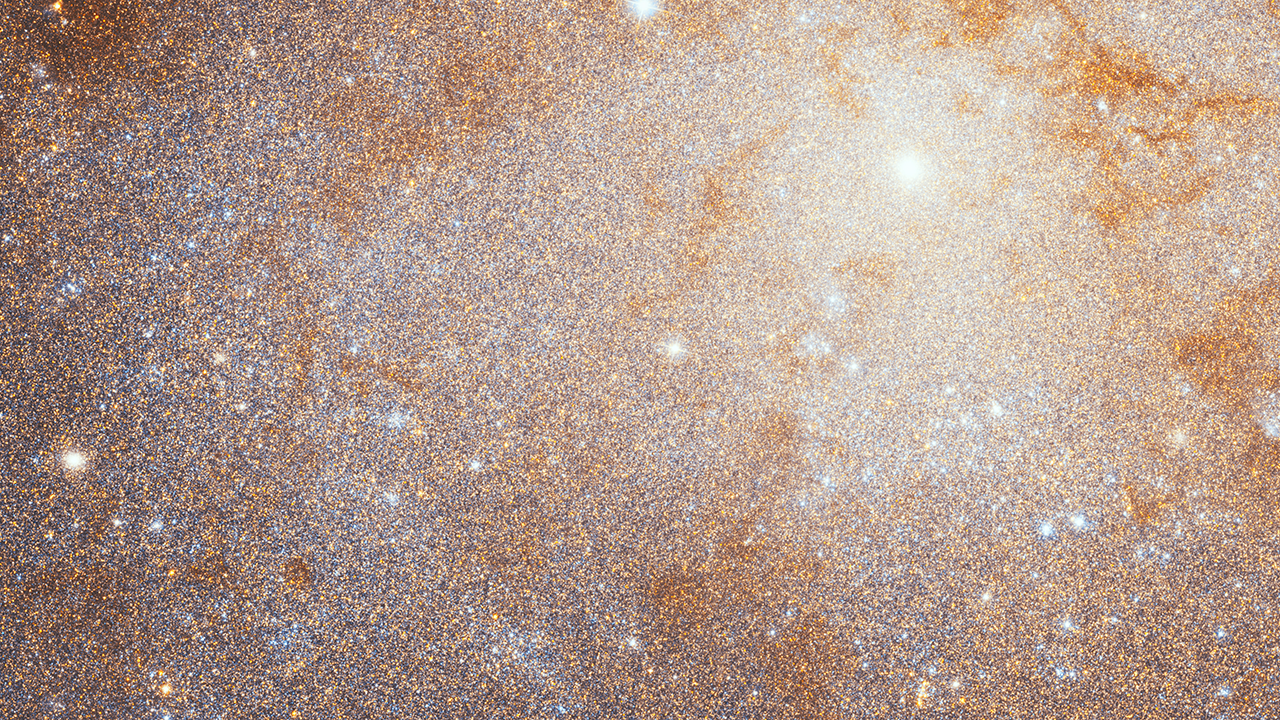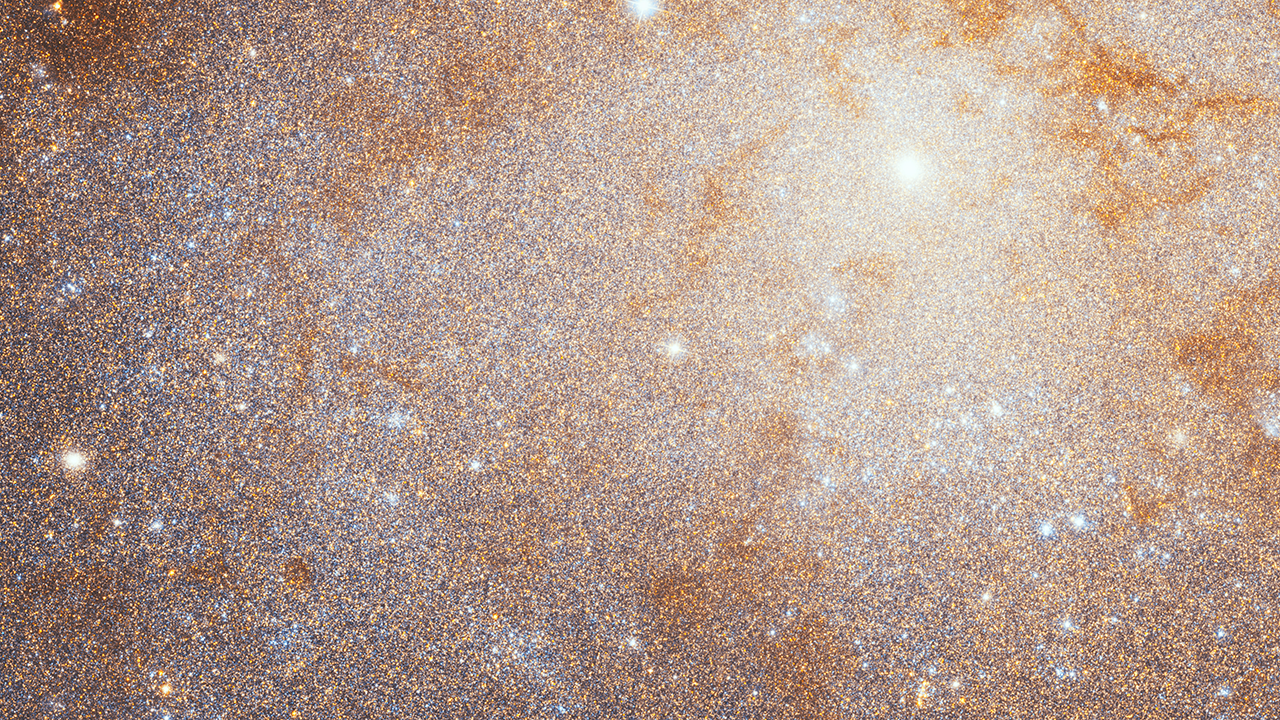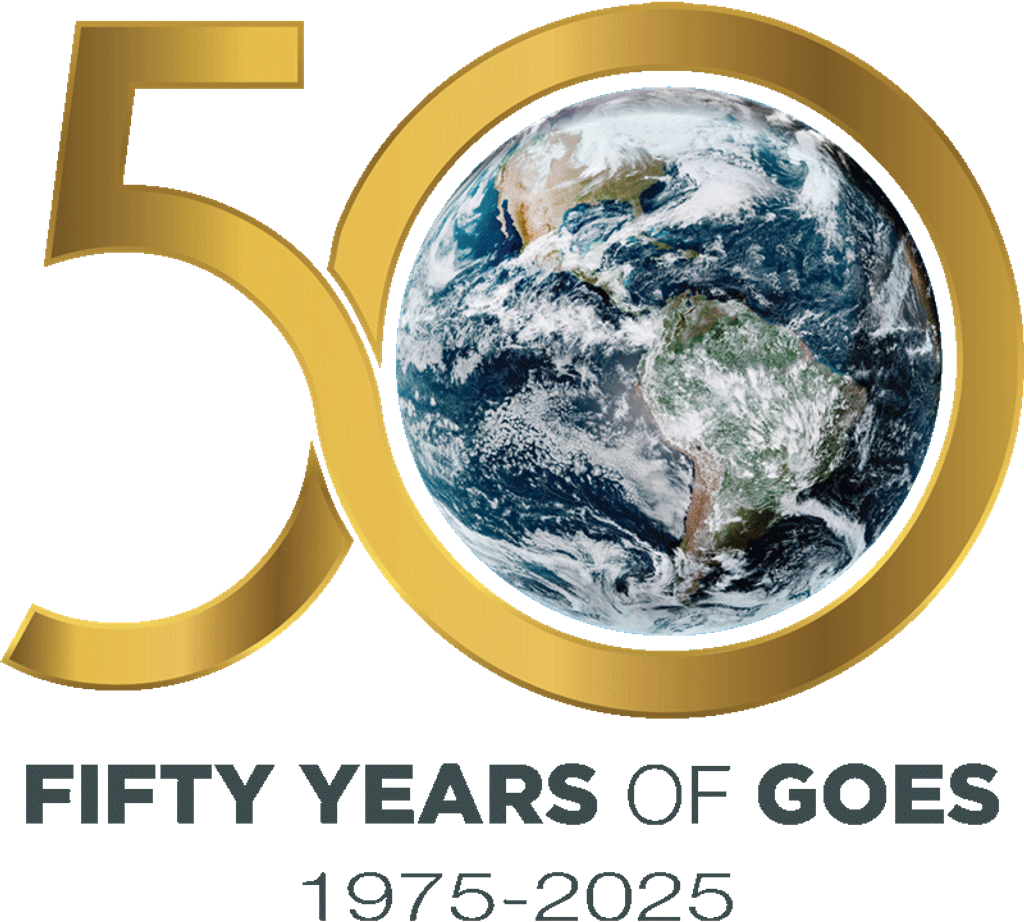1 min read
Triangulum Galaxy (M33) Crop

Hubble Maps an Undisturbed Spiral Galaxy in the Milky Way's Backyard
NASA's Hubble Space Telescope has produced its largest mosaic image ever of the Triangulum galaxy (M33). This image spans 14,500 light-years.
Triangulum seems to have emerged from the ages having interacted little with other galaxies, maintaining a neat, organized spiral and plenty of material for churning out new stars. Astronomers will investigate the impact of Triangulum's high star formation rate density as they comb through the huge trove of data gathered by Hubble. These contradictory features — a quiet past coupled to vigorous star formation — make Triangulum a fascinating member of the Local Group, providing key comparisons and contrasts with the Milky Way and our most massive neighbor, Andromeda.
This mosaic was created from images taken by Hubble's Advanced Camera for Surveys (ACS) between February 2017 and February 2018. The panoramic image will be presented at the 233rd meeting of the American Astronomical Society in Seattle, Washington.
About the Object
- R.A. PositionR.A. PositionRight ascension – analogous to longitude – is one component of an object's position.01:34:33.5
- Dec. PositionDec. PositionDeclination – analogous to latitude – is one component of an object's position.+30:47:58.48
- ConstellationConstellationOne of 88 recognized regions of the celestial sphere in which the object appears.Triangulum
- DistanceDistanceThe physical distance from Earth to the astronomical object. Distances within our solar system are usually measured in Astronomical Units (AU). Distances between stars are usually measured in light-years. Interstellar distances can also be measured in parsecs.2.73 million light-years
- DimensionsDimensionsThe physical size of the object or the apparent angle it subtends on the sky.Image is about 18 arcmin across (about 14,500 light-years)
About the Data
- Data DescriptionData DescriptionProposal: A description of the observations, their scientific justification, and the links to the data available in the science archive.
Science Team: The astronomers who planned the observations and analyzed the data. "PI" refers to the Principal Investigator.Hubble data for this release were obtained from HST proposal 14610 (J. Dalcanton) - InstrumentInstrumentThe science instrument used to produce the data.ACS/WFC
- Exposure DatesExposure DatesThe date(s) that the telescope made its observations and the total exposure time.54 observations between Feb 2017 and Feb 2018
- FiltersFiltersThe camera filters that were used in the science observations.F475W, F814W
- Object NameObject NameA name or catalog number that astronomers use to identify an astronomical object.Triangulum Galaxy, Messier 33
- Object DescriptionObject DescriptionThe type of astronomical object.Spiral Galaxy
- Release DateJanuary 7, 2019
- Science ReleaseTriangulum Galaxy Shows Stunning Face in Detailed Hubble Portrait
- Credit

These images are a composite of separate exposures acquired by the ACS instrument on the Hubble Space Telescope. Several filters were used to sample narrow wavelength ranges. The color results from assigning different hues (colors) to each monochromatic (grayscale) image associated with an individual filter. In this case, the assigned colors are: Cyan: F475W Orange: F814W
Related Images & Videos

Triangulum Galaxy Messier 33 (M33)
Triangulum Galaxy Shows Stunning Face in Detailed Hubble Portrait NASA's Hubble Space Telescope brings the vastness of space into perspective in this mosaic image of the Triangulum galaxy (M33), our neighbor in a collection of dozens of galaxies called the Local Group. The...

Close-up Views of Triangulum Galaxy (M33)
Details in the Triangulum galaxy While the Triangulum galaxy (M33) has led a quiet life compared to other massive galaxies, it still contains evidence of a rich "inner life." This collage zooms into several areas of the larger mosaic, highlighting the amazing details that NASA's...

Zoom into the Triangulum Galaxy – Short Version
Fly across the local galactic neighborhood to the Triangulum galaxy (M33), a smaller spiral than our Milky Way galaxy. Zoom in first on one of M33's bright regions of star birth, nebula NGC 604, glowing with hot ionized hydrogen gas. The remarkable ability of NASA’s Hubble Space...

Zoom into the Triangulum Galaxy – Long Version
Fly across the local galactic neighborhood to the Triangulum galaxy (M33), a smaller spiral than our Milky Way galaxy. Zoom in first on one of M33's bright regions of star birth, nebula NGC 604, glowing with hot ionized hydrogen gas. The remarkable ability of NASA's Hubble Space...
Share
Details
Claire Andreoli
NASA’s Goddard Space Flight Center
Greenbelt, Maryland
claire.andreoli@nasa.gov































